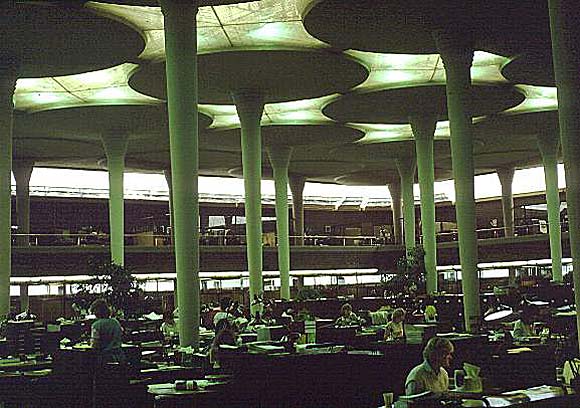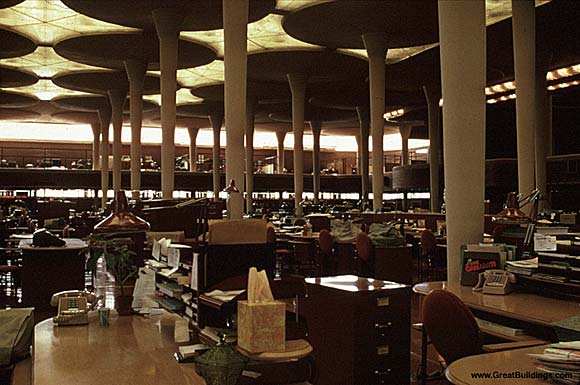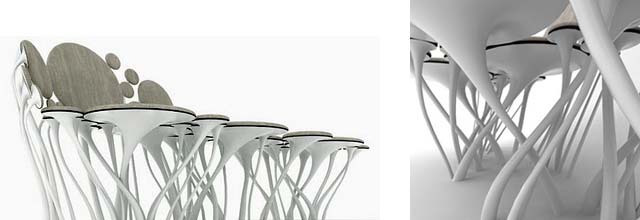He approached a bench and seated himself in its corner, nursing his hat and newspaper


{ Frank Lloyd Wright, Johnson Wax Building, Wisconsin, 1936-1944 | Main room with lily-pad columns | more photos }
The construction of the Johnson Wax building created controversies for the architect. In the Great Workroom, the dendriform columns are 9 inches (23 cm) in diameter at the bottom and 18 feet (550 cm) in diameter at the top, on a wide, round platform that Wright termed, the “lily pad.” This difference in diameter between the bottom and top of the column did not accord with building codes at the time. Building inspectors required that a test column be built and loaded with twelve tons of material. The test column, once it was built, was tough enough that it was able to be loaded fivefold with sixty tons of materials before the “calyx”, or part of the column that meets the lily pad, cracked (crashing the 60 tons of materials to the ground, and bursting a water main 30 feet underground). After this demonstration, Wright was given his building permit.
related:



